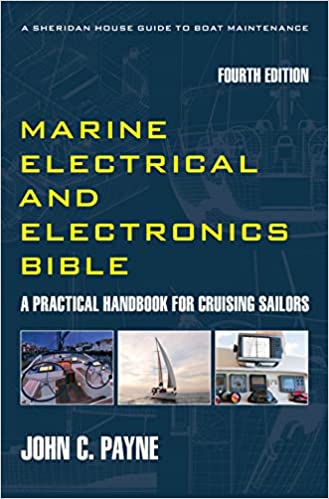Marine Battery Charging Systems
How can you improve your boat and marine battery charging systems? Over the past few years, apart from troubleshooting my own and other peoples cruising yacht battery charging and related electrical systems, I have been actively involved in many new large commercial ship and oil rig projects. Before we build and commission a new offshore vessel or installation we perform what is called a Failure Mode and Effects Analysis (FMEA). Following that we then perform extensive systems testing and trials to prove and verify the conclusions we made in that exercise.
After delivering quite a few lectures and responding to many emails from people and boat owners and continually observing the same mistakes I decided that the same principles could easily be adapted to smaller vessels, in particular cruising yachts and motor and power boats.
Marine Battery Charging Systems Analysis
This exercise isn't as difficult as the name suggests, and it essentially entails the analysis of the entire boat charging and engine starting systems, as both are critical to the vessel propulsion or the electrical power generation which means battery recharging. The primary function of the exercise is the analysis of the complete system and the identification of any single point failures. A single point failure is any point in the system, or the circuit, which is it fails or degrades can result in the loss of that circuit functionality. In simple terms this means looking at what can happen in a worst-case situation. It is a fact that in most cruising yachts there is virtually no redundancy designed or installed into any systems, in particular the boat battery charging system. Almost all electrical systems have no redundancy at all. Any failure at a single point will result in total failure. The fact is that it doesn’t have to be that way and a boat owner can do things to alleviate the risk and exposure.
It is necessary to first identify all of the single points that upon failure will also fail the entire boat charging system. Then we are able devise suitable methods and strategies to improve reliability and provide some redundancy and mitigate the risks. It is important when assessing the failure risks to consider the following factors and statistics:
a. Charging System. A failure in the battery charging system means no charging of batteries and therefore an eventual loss of all electrical power, and possibly propulsion engine starting, loss of communications, navigation instruments and so on.
b. Engine Start System. A failure in the engine starting system means no propulsion and no charging of batteries, and eventual loss of all electrical power.
c. Failure Statistics. Approximately 80% of all electrical system circuit failures are due to faulty or failed electrical connections.
d. Failure Statistics. Approximately 70% of all equipment and machinery failures are attributable to poor or improper maintenance or installation.
In general most people look at the boat charging system in terms of a series of discrete components. A boat charging system must not be viewed as a collection of components, but as an entire electrical power supply system, the boats power station or onboard electricity utility. The typical boat charging system comprises a considerable number of elements and these are summarized.
The 4th Edition of the Marine Electrical Electronics Bible Get your copy and start becoming self sufficient and save money on expensive technician callouts. The 4th Edition of the Marine Electrical Electronics Bible Get your copy and start becoming self sufficient and save money on expensive technician callouts.Boat Charging System Analysis
Make a simple drawing of your boat or marine battery charging systems. It is a good idea to trace out each circuit on your boat and draw in each component and mark each connection on it. As a minimum the average boat charging system will have 4 main positive circuit connections, 4 main negative circuit connections, 4 control circuit connections, 2 changeover switch contacts, a meter shunt, the alternator, the regulator and the batteries.
a. The alternator (which includes several integral components such as the brushes, brush holders, sliprings, bearings, diodes and stator windings).
b. The regulator, (which may be integral or separate).
c. The DC positive circuit, (which includes the connections at the alternator and battery, and the changeover switch or isolation switch).
d. The DC negative circuit, (which includes the connections at the alternator and battery, the cable back to the battery, and the meter shunt if fitted). In addition the engine block also becomes part of the negative circuit, along with alternator bracket, holding bolts etc).
e. The batteries
So how many connections are there, any one that fails brings it all down. Scary stuff!
Boat Charging System Analysis
The math of this simple boat charging system analysis is that there is at least a total of 14 connection or termination points plus the alternator, regulator and battery that can directly impact on the starting system, plus the boat owner. Each point represents a single point failure with subsequent total system failure, with no apparent redundancy. For this exercise wind, water and solar panels are considered extra or supplementary boat charging sources, as are diesel generators with AC battery chargers. These however can be factored into the boat charging redundancy provisions. The operational factors also must be considered, the human factor in particular. If a battery changeover switch is opened or fails during operation, the alternator can be destroyed, and it is more common than one might think. More about boat charging and also more about marine battery charging systems.
